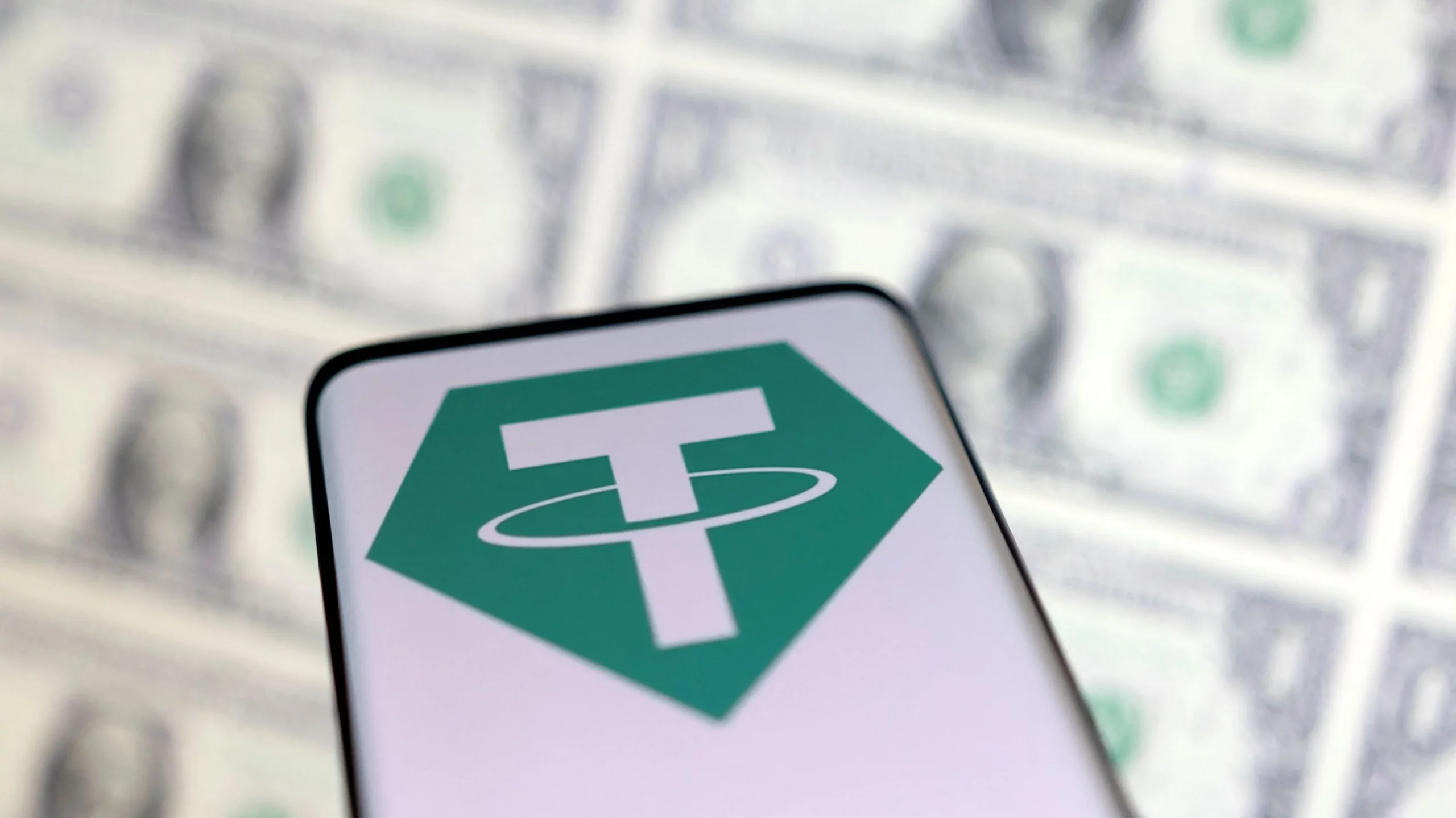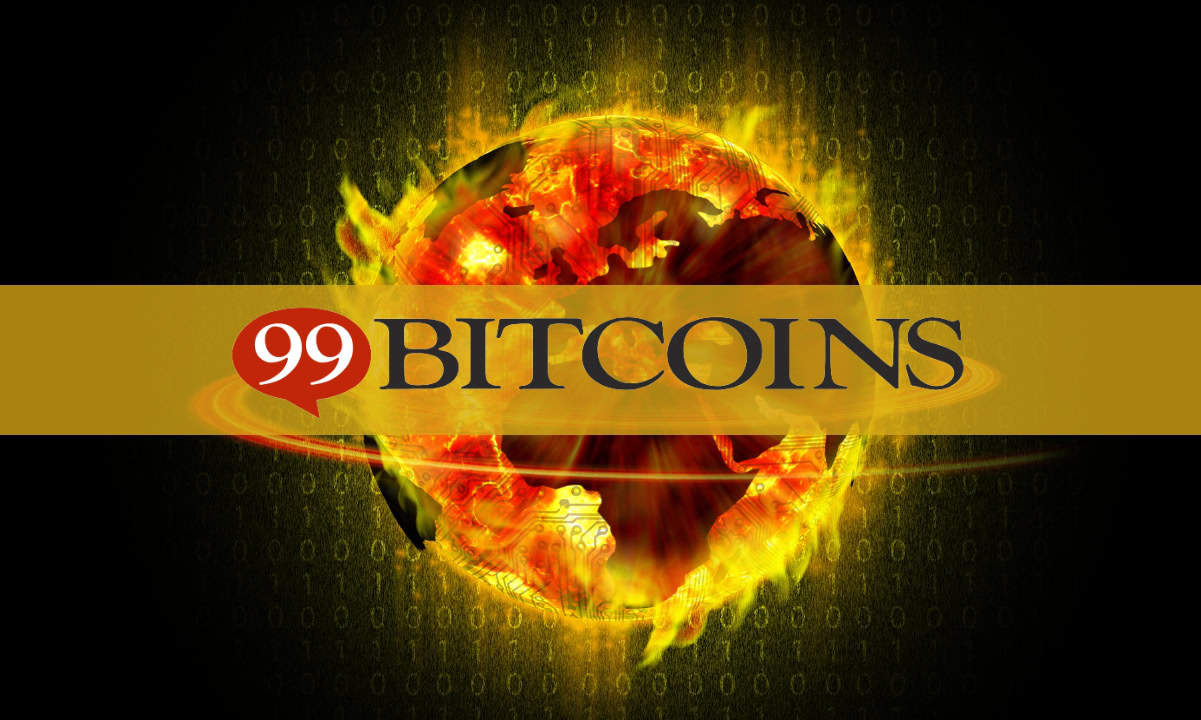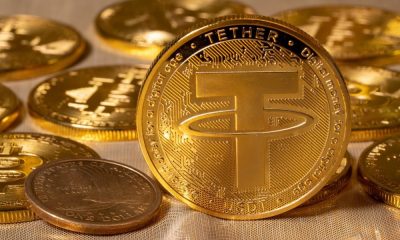Cryptocurrency
Stablecoins are a critical countermeasure to Operation Chokepoint

Stablecoins could help crypto firms to remove themselves from the banking system — and prevent the U.S. government from cutting off their financial lifelines.
Boosting financial inclusion is one of crypto’s strongest value propositions. Yet, ironically, the banking crisis has effectively de-banked the crypto industry itself, at least in the United States.
How things panned out with Silvergate, Silicon Valley Bank and Signature — the three crypto-friendly U.S. banks — reeks of what Nic Carter called “Operation Chokepoint 2.0.” There’s good merit to this claim, though naysayers peddle conspiracy theory allegations with much harshness.
Signature, for one, did not face a bank run. The Federal Deposit Insurance Corporation still took the bank over in a jiffy. Anonymous sources even alleged the FDIC had asserted that any purchaser “must agree to give up all the crypto business,” though the agency walked back those claims.
Crypto not only has the resilience but also the tools to fight back — by leveraging stablecoins to minimize bank dependence. Besides solving an immediate crisis, it can also provide the ground to establish crypto as a self-sufficient and parallel financial system. That was Satoshi’s vision, after all.
U.S. regulators are shooting themselves in the foot
There’s a reason why most regulatory authorities — except in some progressive jurisdictions — have their guns blazing for crypto. Their power rests on the toxic relationship between governments, money printers, big corporations and oligopolies disguised as banking systems. The non-intermediated, permissionless and autonomous systems that crypto enables threatens this anti-individual nexus to its very core.
Our journey toward a more equitable, individual-centric world of crypto was never meant to be easy. The hyper-aggressive response from regulators is also pretty much in line with the expectations. But somehow the authorities, especially in the U.S., don’t seem to realize that their actions are self-destructive.
Technological progress has been crucial in taking the U.S. to its current position of dominance in global geopolitics. Emerging crypto-based technologies enabled the next giant leap in this direction. And if only the regulators could overcome their greed for short-term power and control, they would see how stifling innovation isn’t in their best interest.
For instance, the ongoing banking crisis, which is very much due to misguided policy action and selective enforcement, ultimately hurts financial stability in the United States. Moreover, if it’s indeed a coordinated effort to de-bank the crypto industry, the average U.S. taxpayer is bearing most of the brunt, despite staying within legal limits.
Some projects have found a scalable way to assist crypto firms in becoming regulated institutions — such as Archblock, which onboards U.S.-based community banks to expand on-chain “real-world asset” financing for regulated entities.
While this approach might eventually resolve some regulatory tussles, a sizeable section of the global crypto community is rooting for more radical solutions.
Crypto firms don’t need banks when they have stablecoins
Stablecoins have been under much scrutiny since Terra’s “algorithmic” coin, TerraUSD (renamed to TerraClassicUSD, crashed last year, setting off a chain of events that partly led to the FTX fiasco. The crash wiped out an ecosystem worth $40 billion, but it also served valuable lessons in due diligence, overexposure and risk management.
Something like Operation Chokepoint 2.0, actual or hypothetical, is possible because crypto companies and investors use banks as on-ramps or off-ramps. There are practical reasons for this choice: One can’t buy crypto with cash, for example, and must pay with U.S. dollars from their bank account. Even while using an exchange, they need bank transfers to deposit fiat.
Involving banks so much isn’t necessary, though. Stablecoins can offer the fiat tokenization services for which crypto companies depend on banks with much risk and despair. The process isn’t decentralized, but neither is banking for that matter. It’s not about decentralization here since the goal is to connect centralized and decentralized finance while minimizing counterparty risks.
Former BitMEX CEO Arthur Hayes published a richly informative blog on the subject in March in which he presented a detailed case for choosing stablecoins over banks. Most importantly, he proposed an innovative stablecoin model, which he called the Satoshi Nakamoto Dollar or NakaDollar (NUSD). The idea is to leverage Bitcoin and inverse perpetual swaps such that NUSD doesn’t involve banks in the issuance or redemption process.
Proposals like NUSD are signs of our collective willingness to fight back in the face of regulatory uncertainty and aggressive onslaughts. As crypto evolves, there will be lesser attack surfaces for regulators, and we’ll have more robust alternatives to legacy systems.
Innovation isn’t merely a business model — it’s our biggest strength. And it is through innovation that crypto will overcome all hurdles. The show must go on since future generations deserve a better world.
Cryptocurrency
Bitcoin Price Up 3% as New BRC20 Token 99Bitcoins Raises $1M in ICO

Bitcoin has rallied almost 3% over the past 24 hours, showing signs of recovery from its recent dip. Just two days ago, BTC dropped below the $60,000 mark, reaching as low as $56,500, causing some concern across the market. However, signs of a steady recovery are apparent as we move forward into the post-halving pattern.
Meanwhile, BRC20 tokens are gaining more widespread attention as a way to increase Bitcoin’s utility and send the price soaring again. The new BRC20 token, 99Bitcoins Token, has just raised over $1 million in its presale as its upcoming airdrop draws near.
Experts Point to Previous Post-Halving Bitcoin Price Patterns
Although Bitcoin has fallen below the important support level of $59,000, it seems to be following a similar pattern to other Halving events. Normally, Bitcoin tends to dip slightly before rallying around and powering up to new heights.
Some experts have pointed to this as an essential correction for the price to increase steadily rather than fluctuate wildly.
With movements over the past 24 hours showing a positive market sentiment, the Crypto Fear & Greed indicator for Bitcoin has moved from fear to neutral. This is a sign that some of the more skittish investors are being reassured by the slight increase in the price of BTC.
Meanwhile, more bullish investors are looking to the new BRC20 token standard for extra exposure to Bitcoin price movements and the new utility it brings to the Bitcoin ecosystem.
BRC20 Standard Opens up a New Narrative for 2024
The launch of ERC20 tokens was a pivotal moment in crypto history, starting the rise of Ethereum as a possible contender to lead the crypto market. While Bitcoin has never lost its hold over the market, it certainly ceded some ground to the Ethereum ecosystem with its wide range of applications and new tokens born from the development of the ERC20 standard.
However, last year saw the arrival of the BRC20 token standard opening Bitcoin up to a variety of new applications. We’ve seen Bitcoin’s market dominance grow since the BRC20 token standard was launched last year.
Now that BRC20 is maturing, we’re starting to see many investors pour into the BRC20 space, enjoying the exposure to the price of Bitcoin at a low entry point while being able to create fungible tokens from fractions of Bitcoins.
One new BRC20 token, 99Bitcoins Token, has been attracting the attention of investors and experts across the market with an exciting presale and upcoming Bitcoin airdrop.
99Bitcoins Token Races Past the $1 Million Mark
Since its inception in 2013, 99Bitcoins has gained a reputation for providing unbiased and factual information about Bitcoin and other cryptocurrencies, including its popular free Bitcoin Crash Course.
Now, 99Bitcoins aims to attract newcomers with its new Learn-to-Earn $99BTC token. The learning platform rewards users with tokens as they engage with educational content, fostering crypto literacy in a transparent and accessible manner. The token is being launched on the Ethereum network but will bridge over to the BRC20 token standard after the presale ends.
The presale has already raised over $1 million and the upcoming $99,999 $BTC airdrop has attracted almost 5,000 entries. Currently priced at just $0.00103, this price is set to go up in a few days. With such an established reputation and the need for crypto education across the entire space, this presale is one to watch.
Visit 99Bitcoins Token Presale
Disclaimer: The above article is sponsored content; it’s written by a third party. CryptoPotato doesn’t endorse or assume responsibility for the content, advertising, products, quality, accuracy, or other materials on this page. Nothing in it should be construed as financial advice. Readers are strongly advised to verify the information independently and carefully before engaging with any company or project mentioned and do their own research. Investing in cryptocurrencies carries a risk of capital loss, and readers are also advised to consult a professional before making any decisions that may or may not be based on the above-sponsored content.
Readers are also advised to read CryptoPotato’s full disclaimer.
LIMITED OFFER 2024 for CryptoPotato readers at Bybit: Use this link to register and open a $500 BTC-USDT position on Bybit Exchange for free!
Cryptocurrency
BTC Price Surges Above $59K as Spot Bitcoin ETF Outflows Ease Up

Days after suffering devastating losses that dragged its price to $56,500, bitcoin rebounded on Thursday and during the early hours of Friday. This coincided with a slowdown in outflows from spot bitcoin exchange-traded funds (ETFs) in the US compared to the previous day’s record outflows.
According to the latest data compiled by SoSoValue, spot bitcoin ETFs saw a net outflow of $34.4 million on May 2nd.
Bitcoin ETFs Experience Slower Outflows
BlackRock’s IBIT and Fidelity’s FBTC, the second and third-largest BTC funds by total net assets, had no new flows on Thursday. A similar trend was seen across Bitwise’s BITB, VanEck’s HODL, and WisdomTree’s BTCW which recorded no flow.
However, Bloomberg’s prominent ETF analyst James Seyffart had previously noted that having days of zero inflows is completely normal and shouldn’t be misinterpreted as a failure of the products themselves.
Meanwhile, Grayscale’s GBTC, which has been notoriously experiencing outflows, was the only ETF to see a net outflow on Thursday, totaling $55 million, as per SoSoValue.
On the other hand, Ark Invest’s ARKB led daily net inflows added 13 million. Other spot bitcoin ETFs from Franklin Templeton’s EZBC, Valkyrie’s BRRR, and Invesco and Galaxy Digital’s BTCO recorded $3 million, $2 million, and $1 million in inflows respectively, thereby totaling $6 million combined.
This comes a day after the market saw a record level of outflows for these investment vehicles, registering the largest ever at over $563 million. Fidelity’s FBTC, which had only started losing its grip last week, recorded $191 million in outflows from the fund, surpassing GBTC’s outflow.
May 1st also marked the first time BlackRock’s IBIT recorded a net daily outflow amidst the broader market drawdown that led bitcoin to slip to the lows of $56,500.
Bitcoin Recovery
The market appears to be recovering as bitcoin attracted a modest 3% gain over the past day that pushed its price above $59,300 after FOMC’s dovish stance. As noted by QCP Capital, Chairman Jerome Powell stated that the Fed is not considering rate hikes and announced a reduction in Quantitative Tightening (QT) from $60 billion monthly to $25 billion during the FOMC meeting.
Similarly, in the QRA, the Treasury plans to maintain issuances for longer maturities unchanged, alleviating concerns about a surge in longer-term yields. This approach is expected to dampen the rally of the US dollar, which in turn, bodes well for risk assets such as bitcoin and other cryptocurrencies.
LIMITED OFFER 2024 for CryptoPotato readers at Bybit: Use this link to register and open a $500 BTC-USDT position on Bybit Exchange for free!
Cryptocurrency
Important Ripple v. SEC Lawsuit Update: Here’s How the Trial’s Going

TL;DR
- Ripple contests the SEC’s classification of the “Fox Declaration” as standard evidence, arguing it’s expert testimony, which affects the legal proceedings.
- Predictions suggest a possible $100 million settlement in case, potentially impacting XRP’s value and the broader crypto market.
Ripple Strikes Back
The legal battle between Ripple and the US Securities and Exchange Commission (SEC) escalated recently due to a disagreement on one key witness’ testimony. The two entities can not find common ground on a statement from Andrea Fox (known as the “Fox Declaration”).
The company initially argued that the testimony represented an unsolicited expert opinion, while the regulator described the process as “standard summary evidence in support of calculations for disgorgement.”
The Commission also claimed that the “Fox Declaration” consists of information derived from documents generated by Ripple itself, including tax returns and financial statements, which can be useful for determining the case’s outcome.
Most recently, the firm filed a letter in further support of its initial request. It maintained that the SEC failed to show that the “Fox Declaration” is summary evidence rather than expert testimony.
“Fox is an expert because she purports to use technical or other specialized knowledge to help the trier of fact to understand the evidence or to determine a fact in issue. She does not merely apply basic arithmetic to Ripple’s financial records, as the SEC contends.
Rather, she analyzes Ripple’s records, third-party evidence, and expert reports; draws inferences and conclusions about those documents; and calculates disgorgement, prejudgment interest, and discount amounts based on her analysis.”
The company went further, arguing that even if Andrea Fox could be classified as a summary witness (rather than an expert), the SEC failed to disclose her before the end of the discovery process.
Having that said, Ripple insisted that the testimony should not be taken into account when determining the case’s resolution.
Is a Settlement on the Horizon?
Despite the start of the trial, it remains unclear when the Ripple v SEC case will be officially closed or whether the parties will shake hands on a mutual agreement. One person who predicted the second scenario is the American lawyer, Jeremy Hogan. He thinks the lawsuit may draw to an end this summer following a $100 million settlement.
“I’m saying that the Judge will order 0 disgorgement but throws the SEC a bone and orders Ripple to pay a $100 million penalty,” Hogan stated.
Recall that the watchdog sought a $2 billion fine on the company alleging XRP sales violations. The latter insisted that the penalty should not exceed $10 million.
The outcome of the case might trigger a substantial price rally on Ripple’s native token and the entire crypto market (in the event of a decisive victory for the firm). On the other hand, the sector could be negatively affected if the SEC emerges victorious.
Those willing to learn more about the specifics of the lengthy lawsuit and its impact on XRP, feel free to watch our dedicated video below:
LIMITED OFFER 2024 for CryptoPotato readers at Bybit: Use this link to register and open a $500 BTC-USDT position on Bybit Exchange for free!

 Forex2 years ago
Forex2 years agoForex Today: the dollar is gaining strength amid gloomy sentiment at the start of the Fed’s week

 Forex2 years ago
Forex2 years agoHow is the Australian dollar doing today?

 Forex1 year ago
Forex1 year agoUnbiased review of Pocket Option broker

 Forex2 years ago
Forex2 years agoDollar to pound sterling exchange rate today: Pound plummeted to its lowest since 1985

 Cryptocurrency2 years ago
Cryptocurrency2 years agoWhat happened in the crypto market – current events today

 World2 years ago
World2 years agoWhy are modern video games an art form?

 Stock Markets2 years ago
Stock Markets2 years agoMorgan Stanley: bear market rally to continue

 Economy2 years ago
Economy2 years agoCrude oil tankers double in price due to EU anti-Russian sanctions































